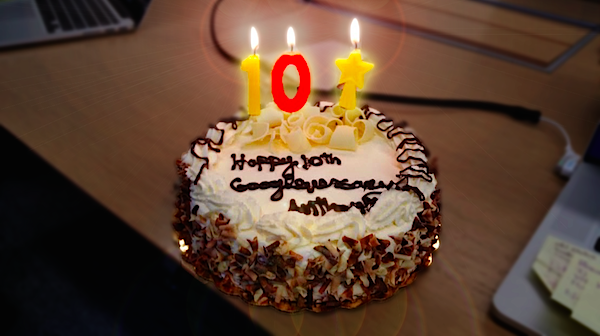So after a gut punch, one of the most important things to do is to take time out to recuperate.

But funny thing is, the highly effective sangria above wasn’t the thing that broke me out of my funk. When something bad happens, I try one of the following strategies to feel better:
- Take a nap. Or just go to bed. Sleeping can sometimes reset your emotional state. When I had my big crisis of faith in the 90’s, converting from Catholicism to Episcopalianism, I slept for like a day and a half, rethinking my whole life. Of course, if you can’t fall asleep, that’s no good - I was up to 5:50AM this morning, so blech.
- Take a walk. This can also provide metaphorical distance from your problems. During my crisis of faith, I walked around my apartment complex again and again, taking an inventory of my whole life, weighing and evaluating everything I could think of. Today, when I tried the same strategy, I was snarling at the air, so blech.
- Change your scene. Talking to uninvolved humans, not connected with your dramas, really can help. I had an interview with a candidate, a technical conversation about deep learning with a TL, and, later, after my mood was lifted, another technical conversation with my waitress at Opa! about the econometrics of developing nations.
As for why that last conversation happened …
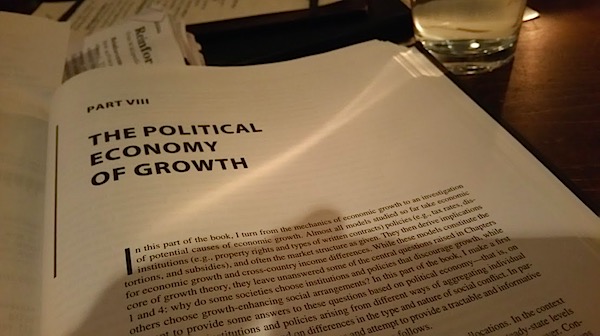
Which goes to the next item on the list ...
- Try shopping therapy. Doesn’t work for everyone, but I’m a bookhound. I ended up going to the Stanford Bookstore to try to pick up a book on large scale machine learning (it had sold out). The books themselves weren’t the solution, but I’m getting to that - but it did involve the books in a tangential way.
- Get some coffee. The inventor of the idea of separation of powers, Montesquieu, reportedly once said “coffee renders many foolish people temporarily capable of wise actions” and I’ve found that to be true - which perhaps suggests that we should install a Starbucks in the Congress and change the structure of our political debates, but nevermind. It helped.
You’ll note that nowhere in here is “get a drink.” That’s a terrible idea - if you think you need a drink, you probably shouldn’t have one, as needing a drink is the road to alcoholism. For that reason, and many others, I always stop at one drink per day - period. No matter how strong the drink, it’s almost impossible for a one hundred and eighty pound male to get drunk on just one.
Having a drink after you feel better, on the other hand, can be a great relaxer. But how do you get to that relaxed state? Well, one thing I try is, well, trying to resolve the problem.
- Talk to the people involved. I have a theory that if you have a problem with a person and leave it alone, your emotional reaction will be frozen, even intensified over time - a theory based on my personal experience, but backed by cognitive emotional theories which say your emotions are derived from your stance, your relationship to the people, actions and events in the world - which doesn’t change if you don’t give yourself the chance to have new experiences with those people. Thanks to the fact that it’s the twenty-first century, this can be done via text, even when people don’t have time to talk.
But the point at which it turned wasn’t when I got a drink. It wasn’t after I took a nap, took a walk, talked to people, changed the scene, got a book on political economy, got coffee, or texted the involved parties to finalize the resolution of yesterday evening’s gut punch. It happened at very strange place, as I was drinking coffee, as I was reading, as I was texting with my friends to resolve the problem, I got sucked in to the problem that prompted me to get the book, a question I heard in an unrelated political debate from last night. As is usual in these cases, I found that the debate followed the rule of thirds: on a third of the topics, my buddy was definitively wrong, on a third, I was definitively wrong, and on the middle third, there were open unresolved questions worthy of debate. And as I started to look at those questions … I had a brainflash on how to solve them.
And then on a meta-brain-flash, as I realized what tacking the problem was doing to my mental state: it was fixing it.
- Do the work. Find something you love, and cultivate the ability to throw yourself into it. If you’ve had a gut punch, you might have a bad taste in your mouth about a lot of the projects you were working on … but get your brain into a new space, and all those behavior programs will execute … and give you something new to fall (intellectually) in love with.
The particular question I was tracking - how to evaluate economic policies - is something I’m going to be working on for a while, but I can give you a flavor for it: how do you know whether a political candidate’s economic policies will work? Sometimes that’s easy: for example, Democrats like to spend when the economy’s doing well, and Republicans like to cut when the economy is doing poorly - and both sides are dead wrong. An economy is not a household - cutting spending in a slump will cut the state’s tax revenues and cause an austerity spiral and increased debt; spending in a boom incurs obligations that the state can’t sustain in the next slump and increased risk. These are pretty close to ironclad laws, that operate whether you believe in big government or small or low taxes or high; those are just the dynamics of economies whether you like it or not - whether you believe it or not, suck it up.
But looking long term, some policies promote growth, and some don’t; and it isn’t always clear which is which. What’s worse, exogenous factors - those pesky world events like wars and plagues and wardrobe malfunctions - throw an unavoidable amount of static on top of whatever we’re trying to measure.
The book I’m reading gives me, so far, the impression that individual outcomes are, roughly, helped by a country’s growth, and a country’s growth is affected by things it can't control, like the luck of history and geography, and things it can, like culture and institutions, with evidence strongly suggesting that institutions matter more than culture, since some countries have kept their cultures but changed their institutions and shown amazing growth. The factors that seem to affect this most are protecting private property, having enforceable contracts, reducing barriers for investment, having a level playing field for businesses, and creating equality of opportunity for citizens … but …
But how much of this is noise, and how much is reality?
And that got me thinking: if you assumed some randomness affecting growth, could you tell apart policies that caused 1 percent growth, or 2 percent growth, or 3 percent growth?
Turns out ... you can.
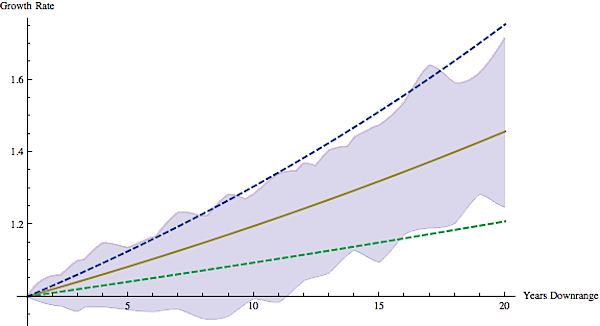
The central red line is 2% growth, projected out over 20 years. The dotted lines above and below it are 1% and 3% growth … and the grey range is the max and min of a stochastic simulation of ten different histories, each with 5% random variation from year to year, which looks something like this:
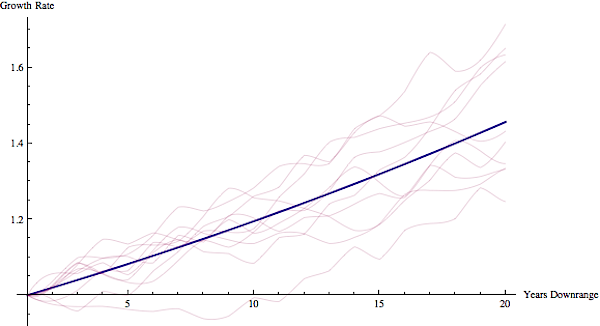
The point is, if you get a gut punch - like in the bottom trajectory above - it can look like you’re running a bad policy on a time range of a decade or more before things start to get back on track. On twenty year time horizons, however, you really can start to see an affect. On even longer time horizons, having the right polices can be the difference between a country like Nigeria - rich with oil wealth, yet having a flat growth range - versus a country like the US or Japan or even Botswana or South Korea.
This doesn’t show whether I or my buddy is right - in fact, this model, even as an abstract model, would need to be augmented greatly, to get a proper range of growth rates, of randomness, of the types of exogenous influences and their timescales. But even in its current state, it shows that under a very broad set of assumptions … I and my buddy were right to wrestle over this problem.
What we do now matters, not just in the next election, but twenty years down the road.
And doing that work took me out of my slump. It connected me to an earlier conversation, to earlier problem solving skills not engaged with what I’d been doing just prior to the gut punch. The gut punch still needs to be dealt with - but now it’s just an event, not a thing that causes random spikes of rage and anger when I’m trying to drink my coffee.

And that’s how I learned a new way to deal with a gut punch.
-the Centaur
Appendix. The graphs above were generated via the following Mathematica code:
RandomGrowth[initial_, rate_, fuzz_] :=
initial (1 + rate) (1 + RandomReal[{-fuzz, fuzz}])
ProjectGrowth[initial_, rate_, fuzz_, years_] :=
NestList[RandomGrowth[#, rate, fuzz] &, initial, years]
InterpolateGrowth[initial_, rate_, fuzz_, years_] :=
Interpolation[ProjectGrowth[initial, rate, fuzz, years]]
FuzzyGrowth[initial_, rate_, fuzz_, years_] :=
Table[InterpolateGrowth[initial, rate, fuzz, years], {iterations, 10}]
fuzzyTwoPercent = FuzzyGrowth[1, 0.02, 0.05, 100]
Plot[{
Min[Map[#[x] &, fuzzyTwoPercent]], Max[Map[#[x] &, fuzzyTwoPercent]],
InterpolateGrowth[1.0, 0.02, 0.0, 100][x],
InterpolateGrowth[1.0, 0.01, 0.0, 100][x],
InterpolateGrowth[1.0, 0.03, 0.0, 100][x]},
{x, 1, 20},
Filling -> {1 -> {2}},
AxesOrigin -> {1, 1},
AxesLabel -> {"Years Downrange", "Growth Rate"},
PlotStyle -> {Thin, Thin, Thick,
Directive[Thick, Dashed],
Directive[Thick, Dashed]}]
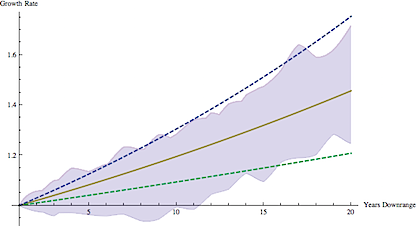
and
Plot[{InterpolateGrowth[1.0, 0.02, 0.0, 100][x], Map[#[x] &, fuzzyTwoPercent]},
{x, 1, 20},
AxesOrigin -> {1, 1},
AxesLabel -> {"Years Downrange", "Growth Rate"},
PlotStyle ->
{Thick,
Thin, Thin, Thin, Thin, Thin,
Thin, Thin, Thin, Thin, Thin}]
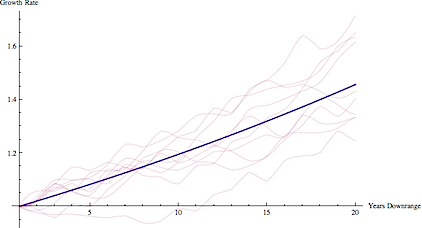
I hope you enjoyed this exercise in computational therapy.
 So Rush has announced that they’re no longer going to tour. Now, I take announcements of retirement by musicians with a grain of salt - how many farewell tours did Cher and Tina Turner have? - unless the musicians have actually died, and then hey, there’s always Tupac to throw a wrench in that monkey. (He, Elvis and Jim Morrison recently announced their tour - I’ll stop.)
So Rush has announced that they’re no longer going to tour. Now, I take announcements of retirement by musicians with a grain of salt - how many farewell tours did Cher and Tina Turner have? - unless the musicians have actually died, and then hey, there’s always Tupac to throw a wrench in that monkey. (He, Elvis and Jim Morrison recently announced their tour - I’ll stop.)
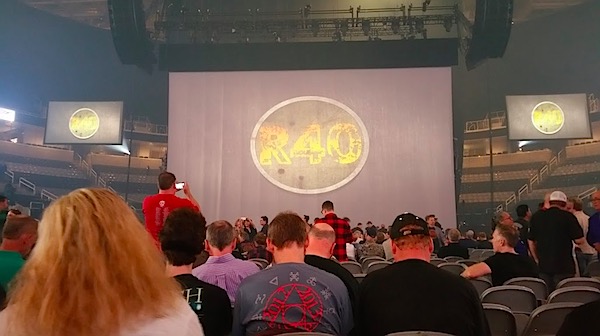 But Rush has been touring for 40 years, their R40 concert was amazing, and their last several albums were solid - if there’s any time they should stop, this is it. If I’d done something awesome for 40 years and I felt inclined to stop, that would be a good point to do it. (I never plan to stop; I want to faceplant in my keyboard before they freeze my head, but hey, that’s me).
But Rush has been touring for 40 years, their R40 concert was amazing, and their last several albums were solid - if there’s any time they should stop, this is it. If I’d done something awesome for 40 years and I felt inclined to stop, that would be a good point to do it. (I never plan to stop; I want to faceplant in my keyboard before they freeze my head, but hey, that’s me).
 Rush was my introduction to rock; it was the first rock band I enjoyed, the first music that my friends liked that I liked too. (Normally there’s no crossover, or, rarely, the musical introductions went the other way around). I still remember “Tom Sawyer” though, after the death of my dad “Vapor Trail” is my favorite. And a Rush concert was one of the first dates I had with my future wife.
Rush was my introduction to rock; it was the first rock band I enjoyed, the first music that my friends liked that I liked too. (Normally there’s no crossover, or, rarely, the musical introductions went the other way around). I still remember “Tom Sawyer” though, after the death of my dad “Vapor Trail” is my favorite. And a Rush concert was one of the first dates I had with my future wife.
 Enjoy your laurels, my never-forgotten friends. Your labors may or may not be ended, but your music will live forever.
-the Centaur
Enjoy your laurels, my never-forgotten friends. Your labors may or may not be ended, but your music will live forever.
-the Centaur 


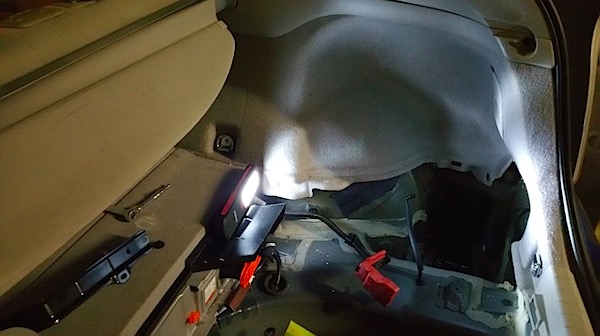
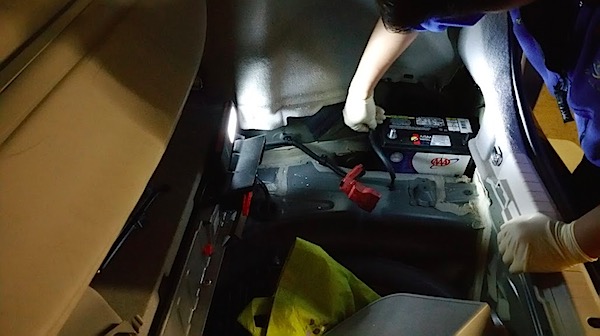
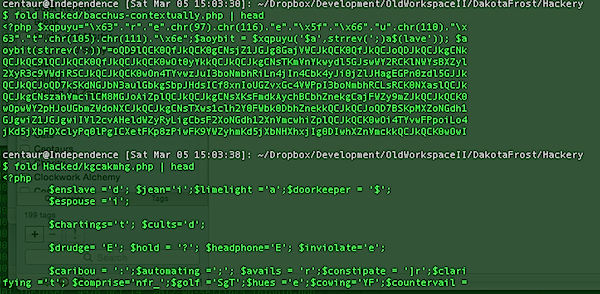




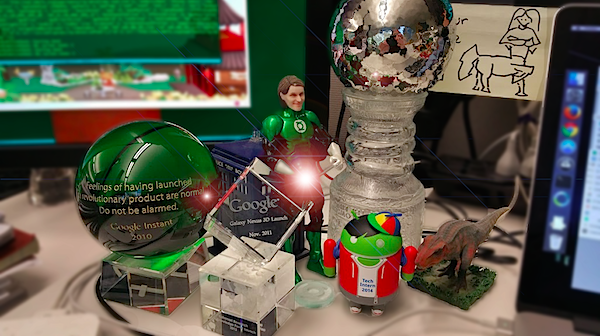 I’m a packrat - not just the six tons of books I have in my library (as of 2006! God knows how much I’ve got now) but at work, where in last week’s office move I had thirty-two individual labeled items for the movers to move, sixteen of those boxes of stuff (again, mostly books, both for my personal library and for the robotics team library). But there were two boxes of stuff I took home, along with various bric-a-brac - mostly genre toys, a lot of them items only there for entertainment, like my large centaur statue or my mini R2D2 robot. But in that is a far more important genre of materials - in a way, the third most important category of things on my desk.
The most important thing on my desk is the computer - I’m there to work, natch. The next most important thing is a picture of one of our cats - not because cats are important, but because it’s a reminder of my wife and family, of why I’m working. But the third most important thing are a set of awards, swag and trophies from work itself.
These trophies include everything from a major award for a team I was on to a tiny piece of swag for hosting an intern. Not a one of them - not a one - is a major award for me in and of myself, sorry; my contributions were minor. But they are reminders that I’ve done something at work I can be proud of. As a neurotic workaholic, I need that feedback to keep going.
When I’m struggling, when I’m fighting an algorithm, when I’m debugging code, I can always look to my right, see my cat sitting in front of a sabertooth skull, and remind myself why I’m doing what I’m doing; then I can look to the left, give my Google Instant globe a spin, and remind myself that hey, don’t you worry: you’ve got this.
-the Centaur
I’m a packrat - not just the six tons of books I have in my library (as of 2006! God knows how much I’ve got now) but at work, where in last week’s office move I had thirty-two individual labeled items for the movers to move, sixteen of those boxes of stuff (again, mostly books, both for my personal library and for the robotics team library). But there were two boxes of stuff I took home, along with various bric-a-brac - mostly genre toys, a lot of them items only there for entertainment, like my large centaur statue or my mini R2D2 robot. But in that is a far more important genre of materials - in a way, the third most important category of things on my desk.
The most important thing on my desk is the computer - I’m there to work, natch. The next most important thing is a picture of one of our cats - not because cats are important, but because it’s a reminder of my wife and family, of why I’m working. But the third most important thing are a set of awards, swag and trophies from work itself.
These trophies include everything from a major award for a team I was on to a tiny piece of swag for hosting an intern. Not a one of them - not a one - is a major award for me in and of myself, sorry; my contributions were minor. But they are reminders that I’ve done something at work I can be proud of. As a neurotic workaholic, I need that feedback to keep going.
When I’m struggling, when I’m fighting an algorithm, when I’m debugging code, I can always look to my right, see my cat sitting in front of a sabertooth skull, and remind myself why I’m doing what I’m doing; then I can look to the left, give my Google Instant globe a spin, and remind myself that hey, don’t you worry: you’ve got this.
-the Centaur 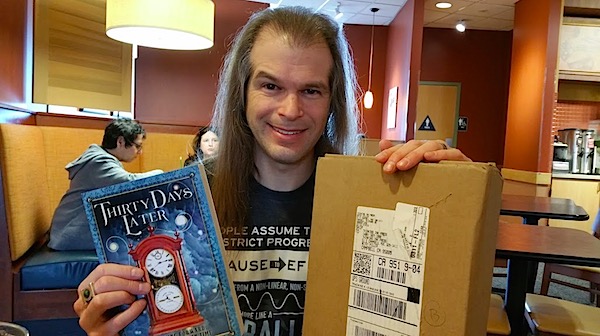



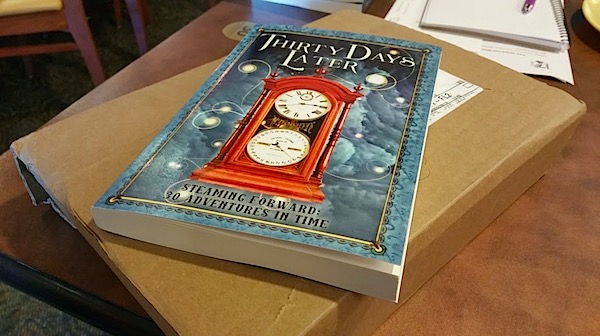


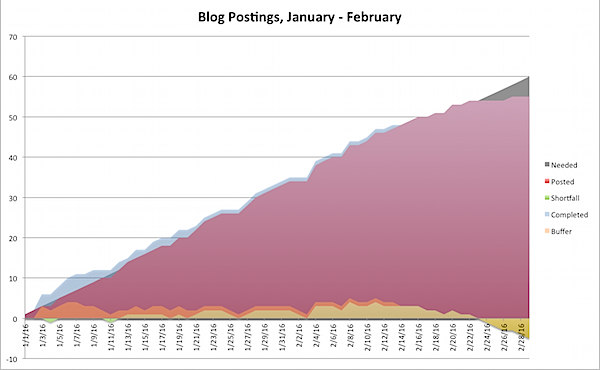
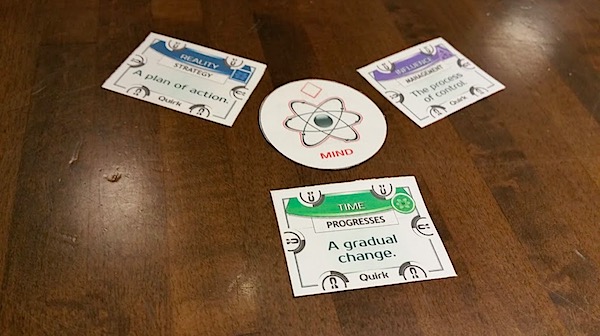
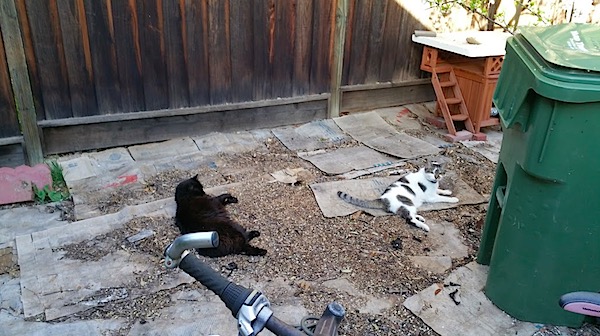
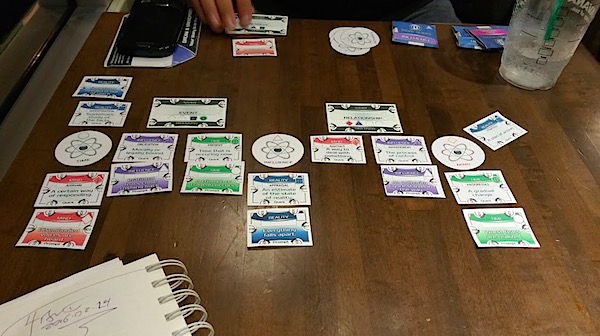

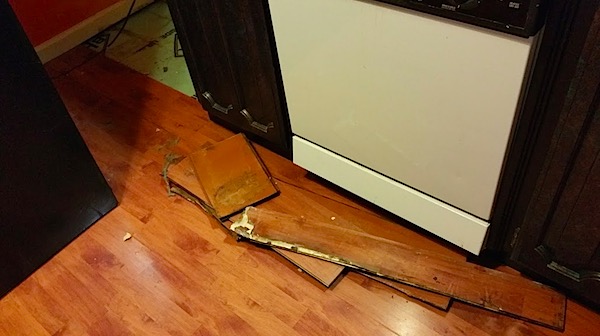
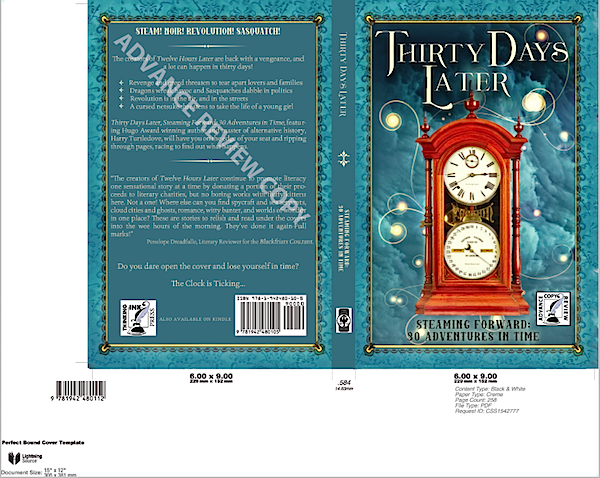

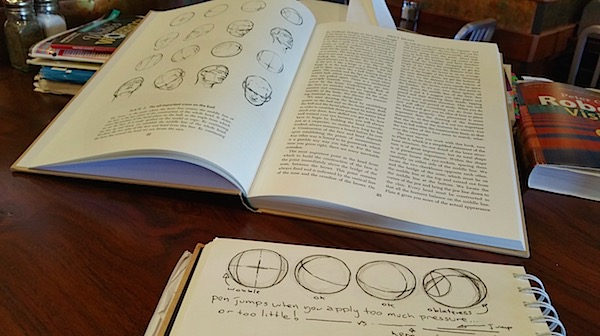

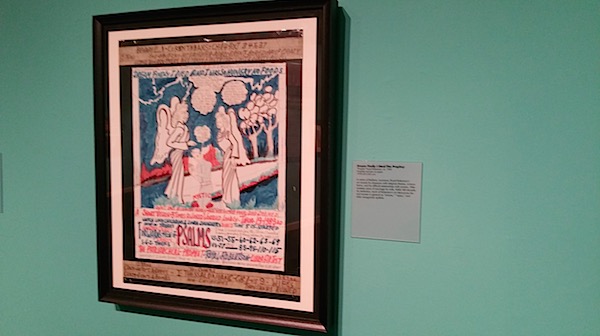
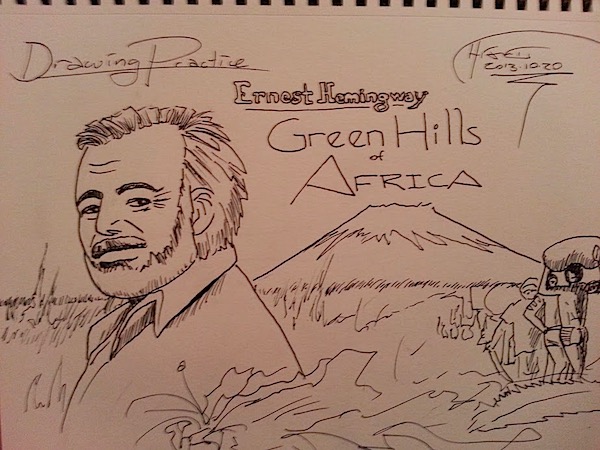

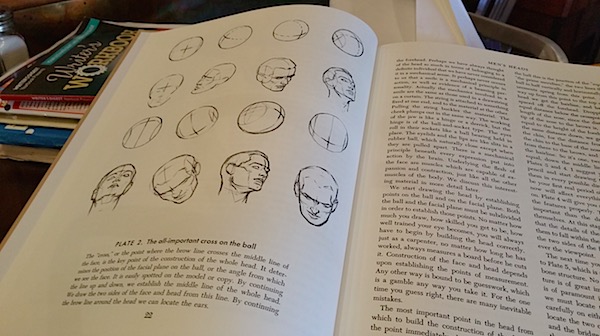
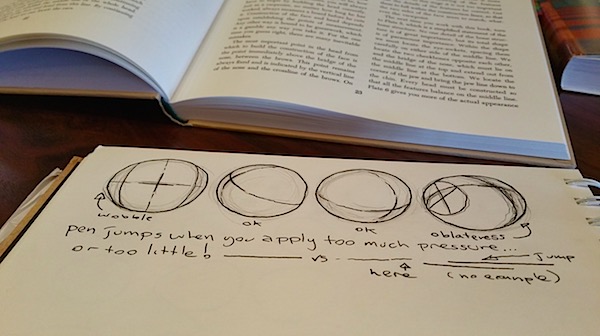
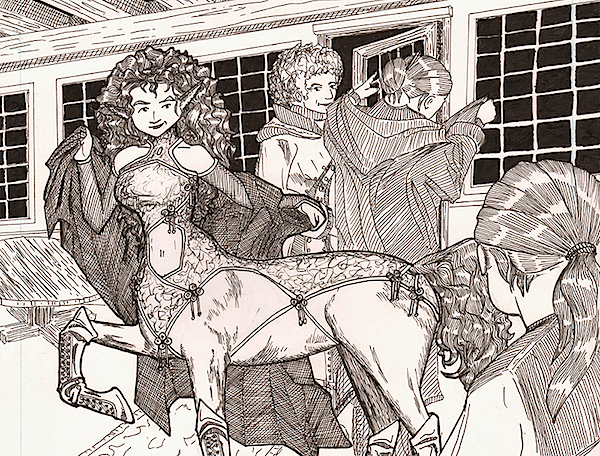








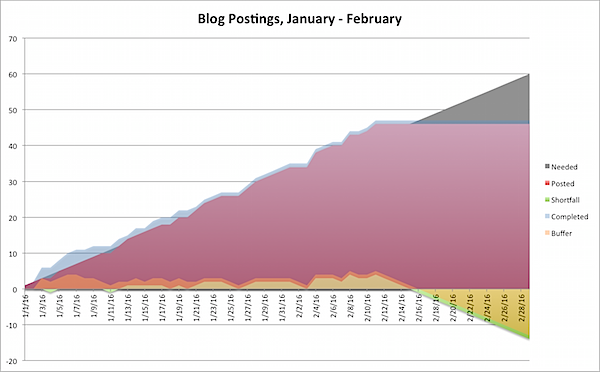







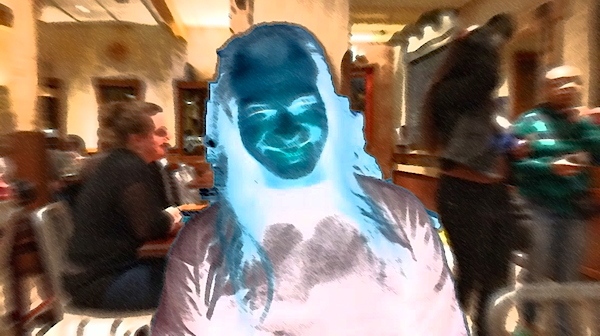 Welp, that took a nasty turn.
The week leading up to my birthday went great: a surprise business trip to Atlanta, a great research talk, a wonderful visit with friends, a nice cake and gift from my teammates on the occasion of my tenth Google anniversary, a great card from my Mom, calls from my Mom and friends, a wonderful birthday dinner with my wife, and then an outpouring of well wishes online - half a dozen via email, and over 70 on Facebook. I was riding high. What a great birthday!
A few hours later, I was seriously considering deleting my Facebook account.
And this blog.
For context, the original title of this post was “worst birthday of my life.” The particulars are, sorry, not your business. But just so you know, no-one involved did anything wrong. It was all a simple series of misunderstandings. And everyone involved managed to fix the problem with a couple of hours of work.
But, still, a sequence of simple thank-yous online and the cascading reactions that followed on from that quickly turned a glorious day into a life-changing gut-punch. Facebook itself isn’t the problem, but deleting my Facebook account would help. But as I step back, I now find myself needing to reconsider, well, everything - not just Facebook, but whether I should have an online presence at all, and my involvement with every single job, relationship and project.
I know a few other people going through similar things right now - a close friend is rethinking their life, and it’s happened to a few bloggers I follow. I know, rationally, that artists have these impulses, I’ve had them since I was a kid, and it’s just a pointless self-destructive exercise. You feel like the particular events that have happened are the cause, but they’re really not. You’ve entered a mood, or a depression, and while it has a trigger, it’s the emotional state that feels forever.
Still, for a moment, I felt like deleting my Facebook account, smashing my computer, and loading the library up into a Dumpster.
To give you a scale of the seriousness of the problem, I am actually still thinking about getting a PODS unit and loading up much of the stuff in the library to get it out of the way and putting all my projects on hiatus while we deal with the shattered windows, the damaged floors, and all the other crap going on at the house. Now, while all that other crap is real, I said it the way I just did to exaggerate the problem. That crap has nothing to do with the gut punch, is all ongoing - the shattered window was from a ladder that fell during some work, the damaged floor behind the fridge was a discovery by my wife when she was doing cleaning.
But when the gut punch happened, it made me step back and look and everything to ask, "is this working?”
So I don’t know what I’m going to do. I might put this blog on hiatus. I might declare a mulligan on some projects. I might rework some habits, make some changes, do things differently.
Or I might just draw a breath, take the gut punch, and move on - the way I did in the shower this morning, at which it all hit me again, hard enough to make me draw a breath; then I thought of the Avengers movie, that quote from Bruce Banner, the thing he just said before going green and tearing off to kick ass and take names: “That’s my secret. I’m always angry.”
Anger is an alarm, a sign of a problem. And the first thing you do with an alarm is to turn it off. Then deal with the problem.
So, this morning, when I felt the gut punch, I drew a breath, straightened up, killed the shower, got dressed, and left for work to go do my fucking job. I had an onsite interview to conduct, I have deep learning techniques to research, I’ve got to reinvent the foundations of mathematics for my latest urban fantasy novel, and I have eighteen more books to write in my main series.
Time to get cracking.
-the Centaur
Pictured: me on my birthday, Photoshopped to illustrate my state of mind when the gut punch arrived.
Welp, that took a nasty turn.
The week leading up to my birthday went great: a surprise business trip to Atlanta, a great research talk, a wonderful visit with friends, a nice cake and gift from my teammates on the occasion of my tenth Google anniversary, a great card from my Mom, calls from my Mom and friends, a wonderful birthday dinner with my wife, and then an outpouring of well wishes online - half a dozen via email, and over 70 on Facebook. I was riding high. What a great birthday!
A few hours later, I was seriously considering deleting my Facebook account.
And this blog.
For context, the original title of this post was “worst birthday of my life.” The particulars are, sorry, not your business. But just so you know, no-one involved did anything wrong. It was all a simple series of misunderstandings. And everyone involved managed to fix the problem with a couple of hours of work.
But, still, a sequence of simple thank-yous online and the cascading reactions that followed on from that quickly turned a glorious day into a life-changing gut-punch. Facebook itself isn’t the problem, but deleting my Facebook account would help. But as I step back, I now find myself needing to reconsider, well, everything - not just Facebook, but whether I should have an online presence at all, and my involvement with every single job, relationship and project.
I know a few other people going through similar things right now - a close friend is rethinking their life, and it’s happened to a few bloggers I follow. I know, rationally, that artists have these impulses, I’ve had them since I was a kid, and it’s just a pointless self-destructive exercise. You feel like the particular events that have happened are the cause, but they’re really not. You’ve entered a mood, or a depression, and while it has a trigger, it’s the emotional state that feels forever.
Still, for a moment, I felt like deleting my Facebook account, smashing my computer, and loading the library up into a Dumpster.
To give you a scale of the seriousness of the problem, I am actually still thinking about getting a PODS unit and loading up much of the stuff in the library to get it out of the way and putting all my projects on hiatus while we deal with the shattered windows, the damaged floors, and all the other crap going on at the house. Now, while all that other crap is real, I said it the way I just did to exaggerate the problem. That crap has nothing to do with the gut punch, is all ongoing - the shattered window was from a ladder that fell during some work, the damaged floor behind the fridge was a discovery by my wife when she was doing cleaning.
But when the gut punch happened, it made me step back and look and everything to ask, "is this working?”
So I don’t know what I’m going to do. I might put this blog on hiatus. I might declare a mulligan on some projects. I might rework some habits, make some changes, do things differently.
Or I might just draw a breath, take the gut punch, and move on - the way I did in the shower this morning, at which it all hit me again, hard enough to make me draw a breath; then I thought of the Avengers movie, that quote from Bruce Banner, the thing he just said before going green and tearing off to kick ass and take names: “That’s my secret. I’m always angry.”
Anger is an alarm, a sign of a problem. And the first thing you do with an alarm is to turn it off. Then deal with the problem.
So, this morning, when I felt the gut punch, I drew a breath, straightened up, killed the shower, got dressed, and left for work to go do my fucking job. I had an onsite interview to conduct, I have deep learning techniques to research, I’ve got to reinvent the foundations of mathematics for my latest urban fantasy novel, and I have eighteen more books to write in my main series.
Time to get cracking.
-the Centaur
Pictured: me on my birthday, Photoshopped to illustrate my state of mind when the gut punch arrived. 